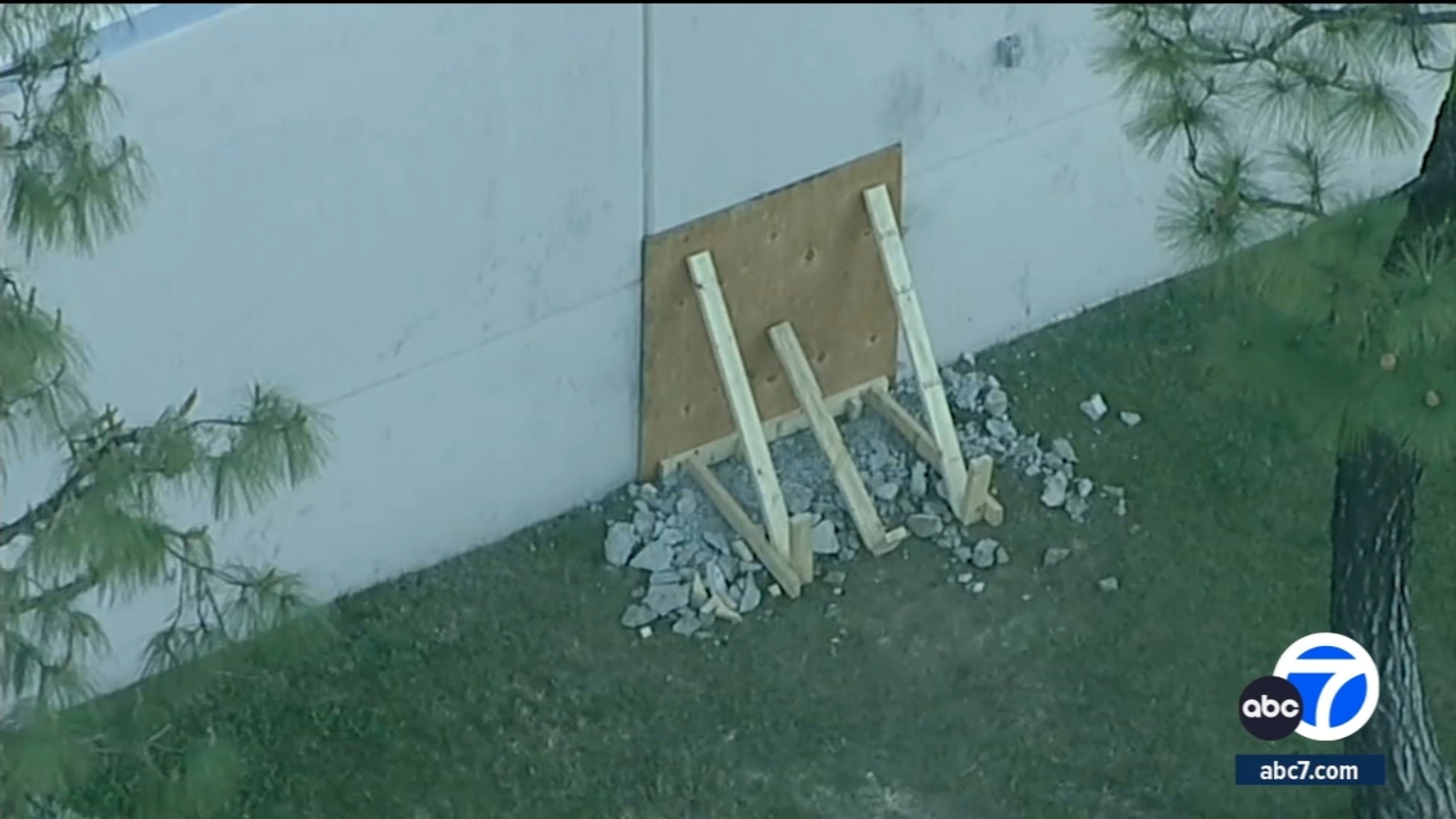Landslide Risk Forces Evacuation In Swiss Mountain Village

Table of Contents
The Imminent Landslide Threat
The evacuation was prompted by a rapidly escalating landslide risk stemming from a confluence of geological factors. The village, situated on a steep, unstable slope composed primarily of shale and clay, has experienced unusually heavy rainfall over the past several weeks. This prolonged saturation of the soil has significantly reduced its shear strength, making it increasingly susceptible to failure. The situation was further exacerbated by the presence of a pre-existing fault line running through the hillside.
Warning signs leading to the evacuation included:
- Increased ground movement: Sophisticated monitoring equipment detected a significant acceleration in ground movement in the days leading up to the evacuation order.
- Ground cracking: Numerous cracks appeared in the ground, indicating the build-up of stress and the potential for a catastrophic slope failure.
- Altered water flow: Changes in the flow patterns of nearby streams and springs signaled subsurface water movement indicative of soil instability.
- Expert geological assessment: Geological experts, analyzing the data collected from monitoring equipment and on-site assessments, concluded that a large-scale landslide was imminent, necessitating immediate evacuation.
Experts estimate the potential landslide to involve several hundred cubic meters of earth and debris, posing a significant threat to homes, infrastructure, and potentially lives. The predicted path of the landslide includes several buildings and the main village road, creating a high-urgency situation demanding immediate action.
Evacuation Procedures and Affected Residents
The evacuation order was issued with relatively short notice, giving residents approximately 24 hours to gather essential belongings and evacuate. While largely orderly, the operation presented challenges due to the limited accessibility of the village and the need to transport elderly and infirm residents. Approximately 150 residents were evacuated, temporarily relocated to nearby towns and provided with shelter, food, and essential supplies by local authorities and the Swiss Red Cross.
The support provided by local authorities and aid organizations was widely praised. One resident, Maria Schneider, commented, "It was a frightening experience, but the swift action of the authorities and the support we received eased the burden during a very difficult time." The temporary housing arrangements are designed to be long-term solutions until further assessments determine the safety of returning to the village.
Geological Factors and Long-Term Risks
The region's geology plays a significant role in its susceptibility to landslides. The underlying geology is characterized by unstable slopes, weathered rock formations, and easily saturated soils. This inherent instability is further amplified by the region's steep topography and high rainfall.
Climate change exacerbates these risks. Increased frequency and intensity of rainfall events, a direct consequence of climate change, increase soil saturation and enhance the likelihood of landslides. The melting of permafrost in higher elevations further destabilizes slopes, adding to the long-term threat.
Historical records show previous landslides in the area, though none on the scale predicted for this current event. These past incidents highlight the ongoing and evolving nature of landslide risk in this region. The long-term risks are significant and necessitate continuous monitoring, employing advanced technologies and preventative measures.
Mitigation Strategies and Future Preparedness
Short-term mitigation efforts focus on improving drainage systems to reduce soil saturation, implementing temporary slope stabilization measures, and enhancing the early warning system. Long-term strategies involve more extensive slope stabilization techniques, such as reinforced retaining walls and bioengineering solutions, aiming to create more stable slopes.
Technology plays a crucial role in landslide prediction and prevention. Advanced monitoring systems, utilizing ground-penetrating radar, satellite imagery, and laser scanning, provide crucial data for predicting potential landslides. Real-time monitoring combined with sophisticated predictive models improves the accuracy and timeliness of warnings.
The effectiveness of existing emergency response plans will be reviewed and refined, focusing on improving communication protocols and evacuation procedures. Ongoing research initiatives are exploring innovative solutions for landslide mitigation, including the development of novel early warning systems and the implementation of sustainable land management practices to reduce future risks. The goal is to build a more resilient community capable of withstanding the ongoing threats posed by landslides.
Conclusion
The landslide risk in Swiss villages, as vividly demonstrated by this recent evacuation, demands urgent and sustained attention. The combination of geological instability, increased rainfall due to climate change, and the potential for significant loss of life necessitates a multi-pronged approach to mitigation. This incident serves as a stark reminder of the need for continuous monitoring, improved early warning systems, and the implementation of robust preventative measures. Investing in landslide prevention, landslide mitigation, and landslide safety is not merely a cost; it's an investment in the protection of lives and livelihoods.
Share this article to raise awareness of landslide risk in Swiss villages and encourage investment in effective solutions. Let's work together to protect our communities from the devastating impact of future landslides. Learn more about landslide risks in your area and support initiatives dedicated to reducing the impact of future events. Let's prioritize landslide safety.

Featured Posts
-
 Ralph Macchio On My Cousin Vinny Reboot Update And Joe Pescis Involvement
May 23, 2025
Ralph Macchio On My Cousin Vinny Reboot Update And Joe Pescis Involvement
May 23, 2025 -
 Big Rig Rock Report 3 12 99 7 The Fox Trucking Industry News And Analysis
May 23, 2025
Big Rig Rock Report 3 12 99 7 The Fox Trucking Industry News And Analysis
May 23, 2025 -
 First Test Bangladesh Mounts A Comeback Against Zimbabwe
May 23, 2025
First Test Bangladesh Mounts A Comeback Against Zimbabwe
May 23, 2025 -
 Understanding The Power Dynamics In Succession Sky Atlantic Hd
May 23, 2025
Understanding The Power Dynamics In Succession Sky Atlantic Hd
May 23, 2025 -
 Can You Still Negotiate After A Best And Final Job Offer
May 23, 2025
Can You Still Negotiate After A Best And Final Job Offer
May 23, 2025
Latest Posts
-
 Millions Made From Executive Office365 Account Breaches Fbi Investigation
May 23, 2025
Millions Made From Executive Office365 Account Breaches Fbi Investigation
May 23, 2025 -
 Federal Investigation Millions Stolen Through Office365 Executive Account Hacks
May 23, 2025
Federal Investigation Millions Stolen Through Office365 Executive Account Hacks
May 23, 2025 -
 T Mobiles 16 Million Data Breach Fine Three Years Of Violations
May 23, 2025
T Mobiles 16 Million Data Breach Fine Three Years Of Violations
May 23, 2025 -
 2024 Open Ai Developer Event New Tools For Streamlined Voice Assistant Development
May 23, 2025
2024 Open Ai Developer Event New Tools For Streamlined Voice Assistant Development
May 23, 2025 -
 Open Ai Simplifies Voice Assistant Creation Key Highlights From The 2024 Developer Event
May 23, 2025
Open Ai Simplifies Voice Assistant Creation Key Highlights From The 2024 Developer Event
May 23, 2025
